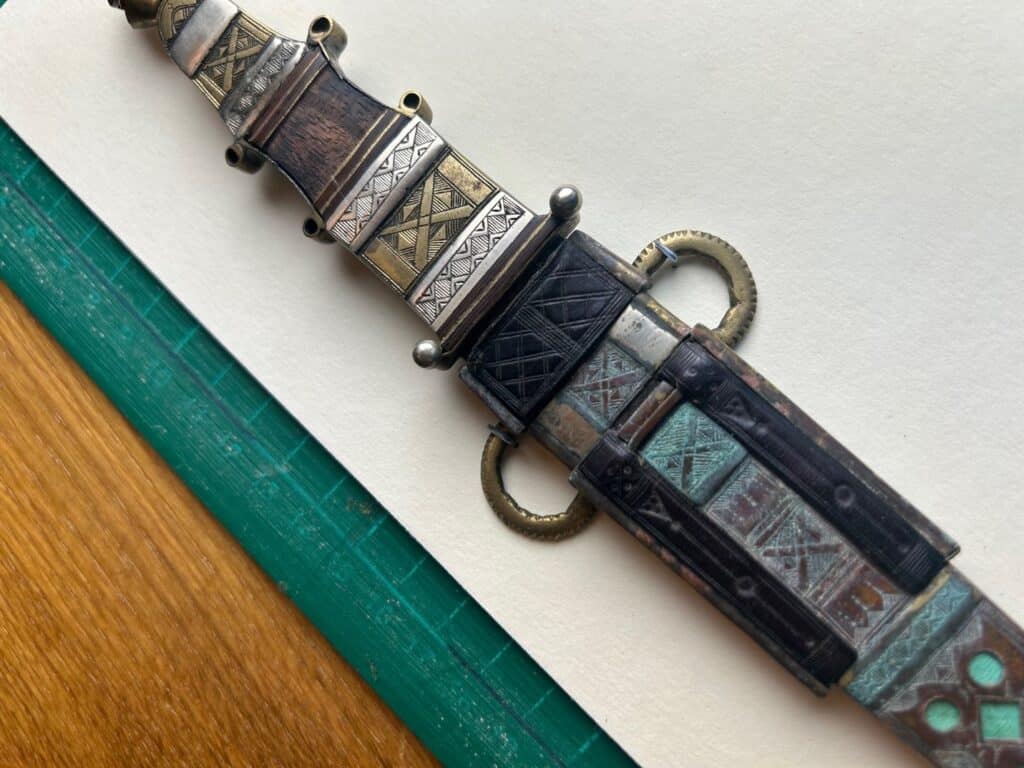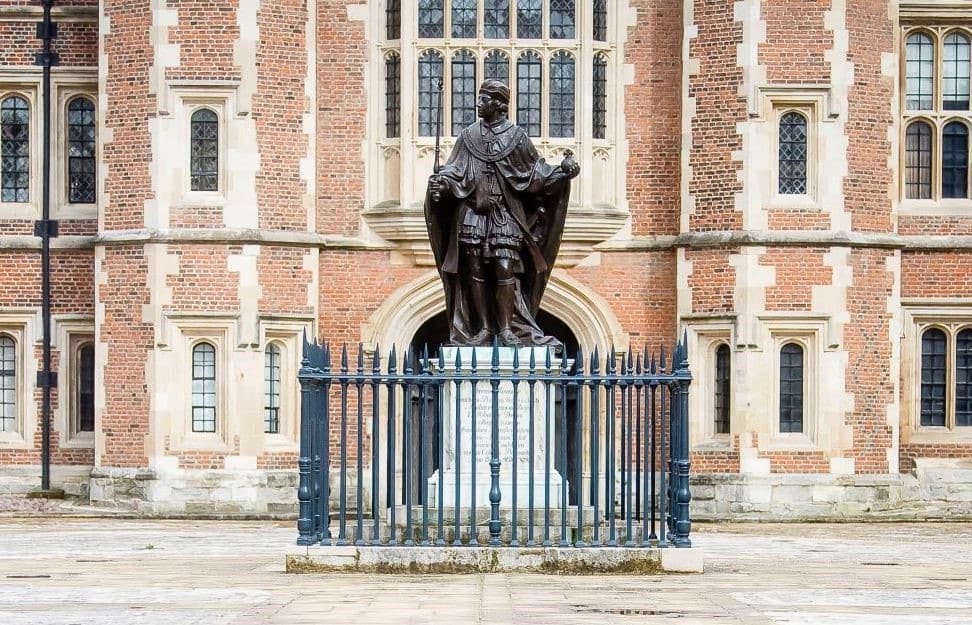Among the most beautiful books in College Library are those produced by the private press movement beginning in 1890, when William Morris and Emery Walker founded the Kelmscott Press to revive the craft of early printing and create beautiful books inspired by medieval book design, as a reaction to the mass production of books using modern technologies.
This year marks the centenary of the Gregynog Press, which takes its name from Gregynog Hall, a historic house near Newtown, Montgomeryshire (Powys). Two sisters, Gwendolen and Margaret Davies, bought the historic house and gardens in 1920 with the intention of bringing art, music and crafts to the local community, especially soldiers returning from the Front.
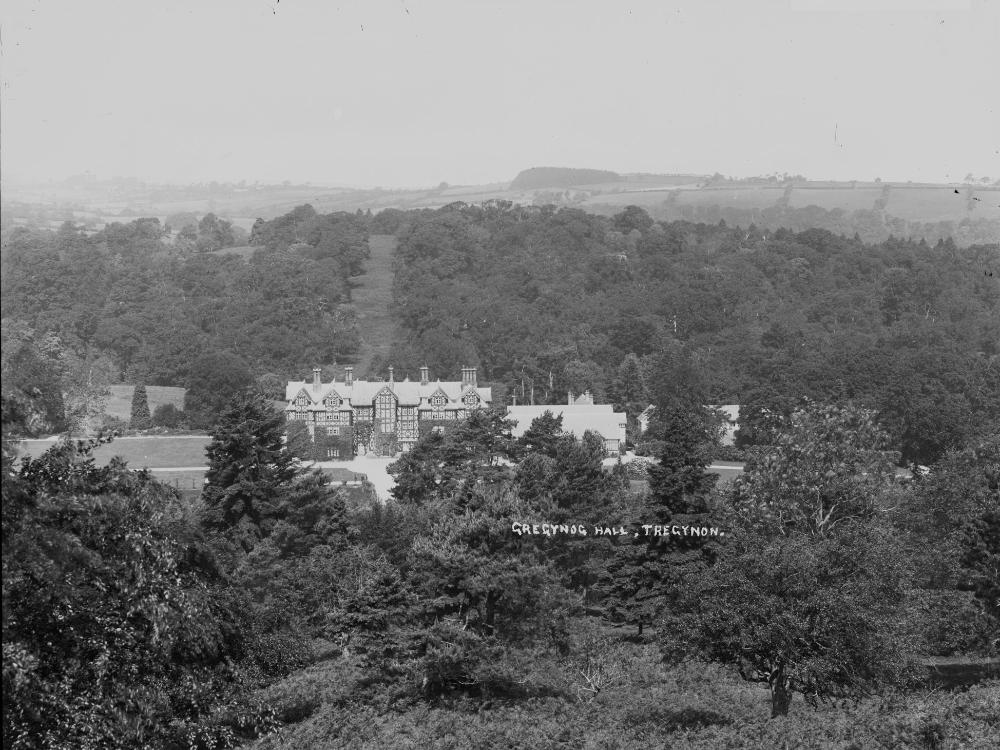
Originally conceived as a house for artists with craft workshops and music, only printing survived of the many activities envisaged. The first controller of the press was appointed in 1921, but rather like Gutenberg, the first item produced by the press was a piece of ephemera – a 1922 Christmas card – and the first Gregynog Press book was published in 1923.
The hey-day of the original press was the period between 1930 and 1933, when it was run by the printer and artist William MacCance (sometimes spelled McCance), the wood-engraver Blair Hughes-Stanton, and their wives, the artists Gertrude Hermes and Agnes Miller Parker.
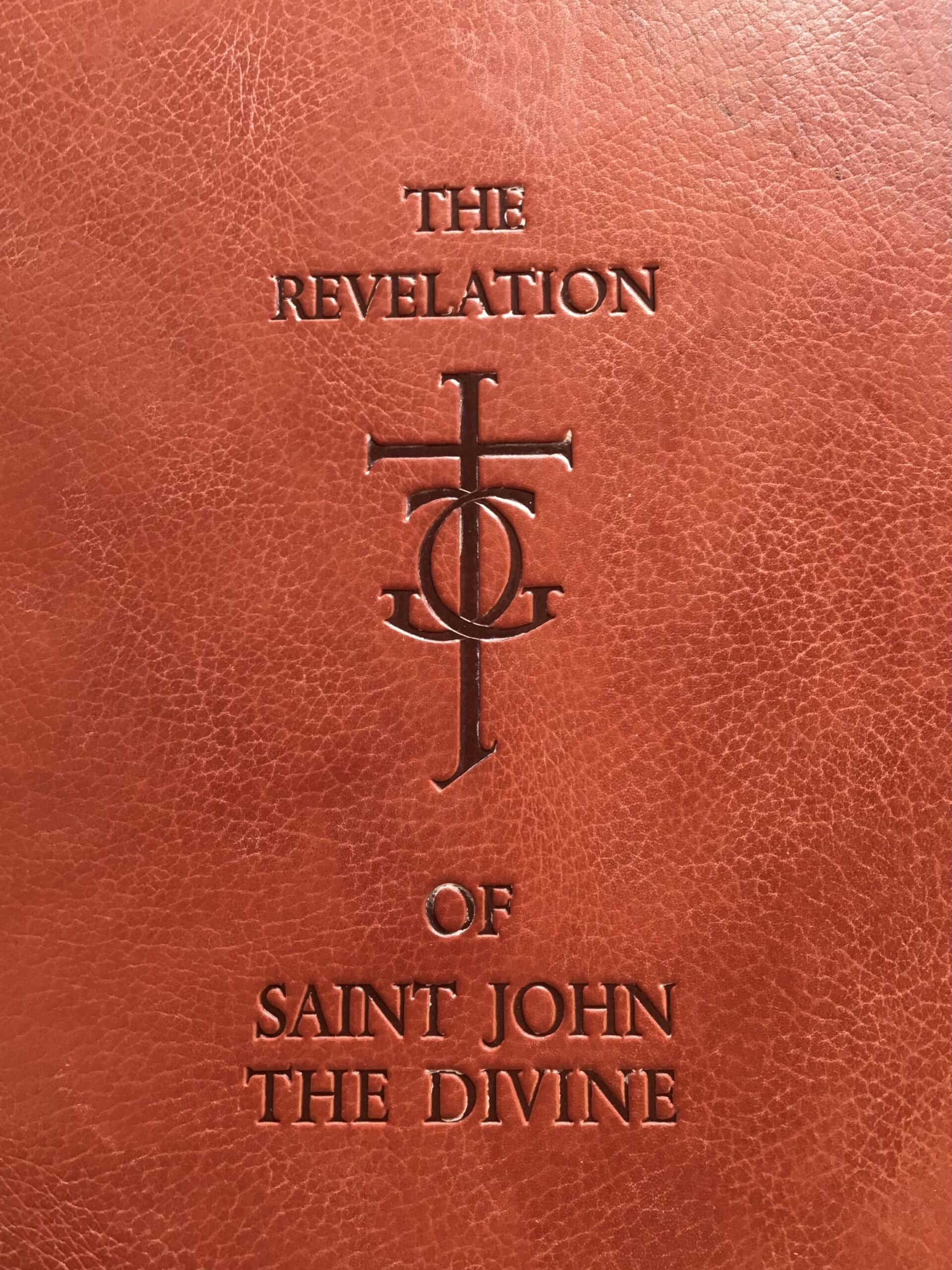
Revelation of St John the Divine, 1932
ECL Lx.2.42
This book was designed and illustrated by Blair Hughes-Stanton. The finely drawn figures demonstrate Hughes-Stanton’s delicate technical mastery of light and shade. To print such fine wood-engraving required special care in combining German ink and smooth Japanese vellum paper.
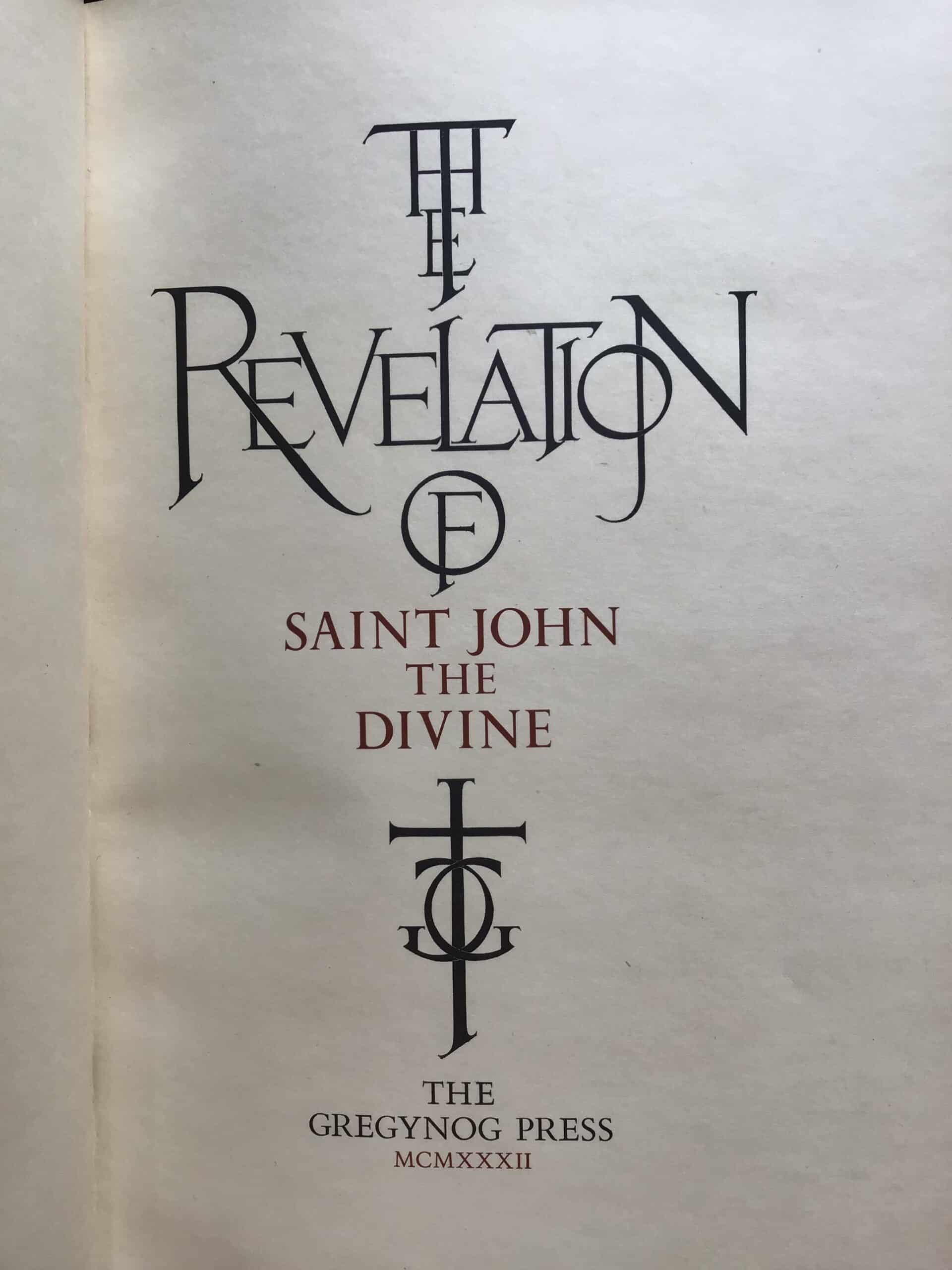
Revelation of St John the Divine, 1932
ECL Lx.2.42

Revelation of St John the Divine, 1932
ECL Lx.2.42
Uniquely among the British private presses, the Gregynog Press designed, illustrated, typeset, printed and bound their books under one roof, but unlike those like the Kelmscott Press, which sought to revive the technologies of the hand press era, Gregynog also took advantage of new tools and techniques, for example acquiring a Monotype type caster and using a machine press while still setting the type by hand.
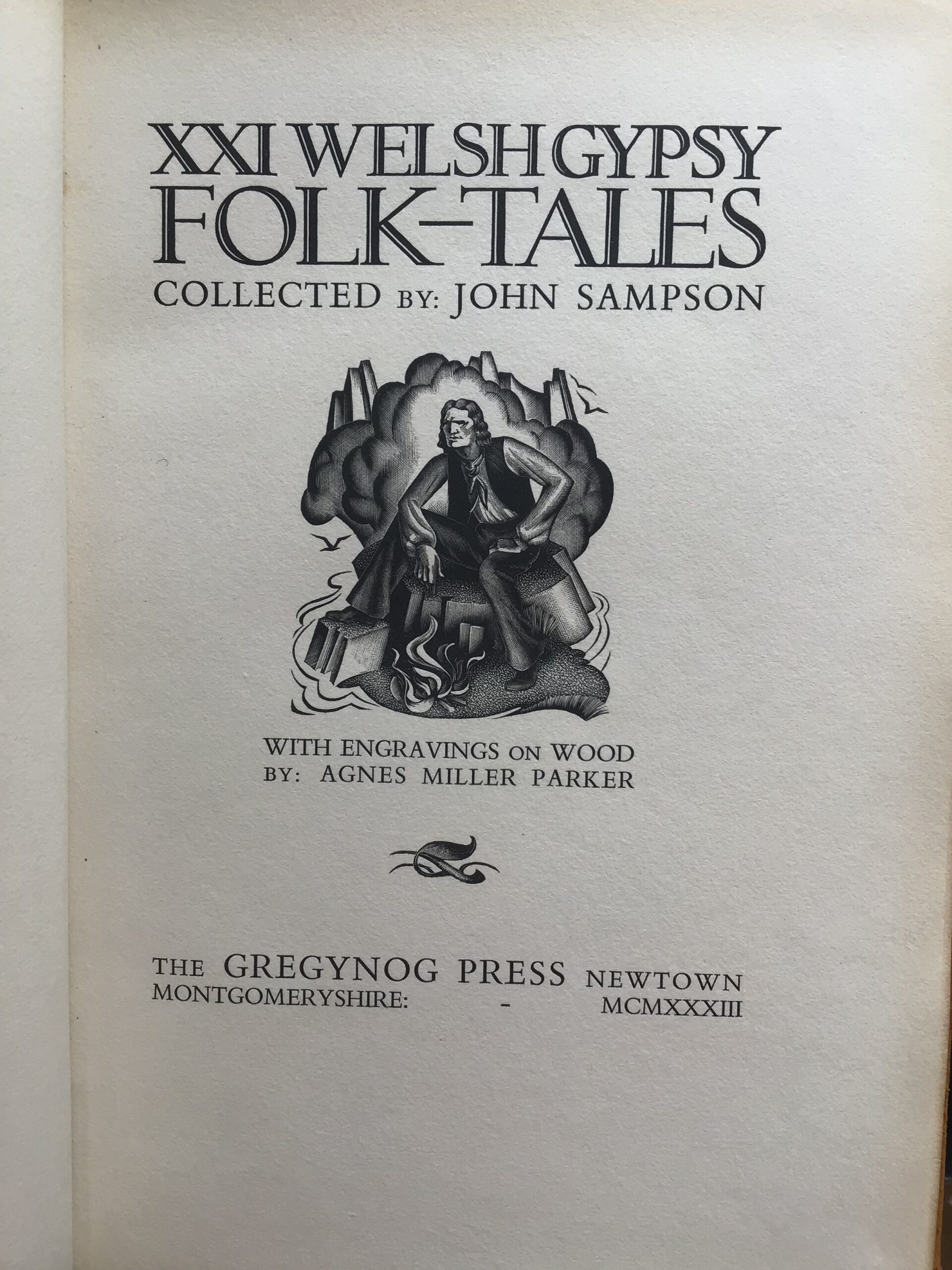
XXI Welsh Gypsy Folk-tales, 1933
ECL Lx.2.43
XXI Welsh Gypsy Folk-tales collected by John Sampson; with engravings on wood by Agnes Miller Parker, 1933
Many Gregynog books were printed in Welsh, or drew on Welsh themes. This collection of Roma tales is illustrated by Agnes Miller Parker and set in Monotype Bembo, based on a typeface created for the Venetian printer Aldus Manutius in 1495. The English translation seeks to capture some of the flavour of the oral tradition of Roma storytelling.

XXI Welsh Gypsy Folk-tales, 1933
ECL Lx.2.43
XXI Welsh Gypsy Folk-tales collected by John Sampson; with engravings on wood by Agnes Miller Parker, 1933
Between 1923 and 1940, when it closed due to the impact of the economic recession in the 1930s, the Gregynog Press published 42 books in English and in Welsh, three for private circulation, and well over 200 pieces of ephemera.
After the liquidation of the press, Margaret Davies bequeathed Gregynog Hall to the University of Wales in 1960. The printing equipment (including type and paper) survived, and printing was resumed in the mid-1970s under the Welsh imprint ‘Gwasg Gregynog’, making it the last survivor of the golden age of the British private press movement. The modern press still draws on traditional printing skills with illustrations by leading contemporary artists, and continues to produce books in Welsh as well as English.

Of a Feather, 2008
ECL Ls.4.58
Colin See-Paynton, Of a Feather: avian collective nouns & terms of assembly, group names & associated terms, 2008
The newest addition to Eton’s British private press collection is our first example of the work of the revived press, and one of the most beautiful books it has produced. Written and illustrated by Colin See-Paynton, one of the finest wood-engravers working today, the text and images alike draw on his lifelong interest in nature and the poetry of the words formerly used to describe it. Entirely self-taught, his work has been compared to that of Thomas Bewick, the founder of modern wood-engraving, and is notable for its complexity, fluid line and use of pattern.
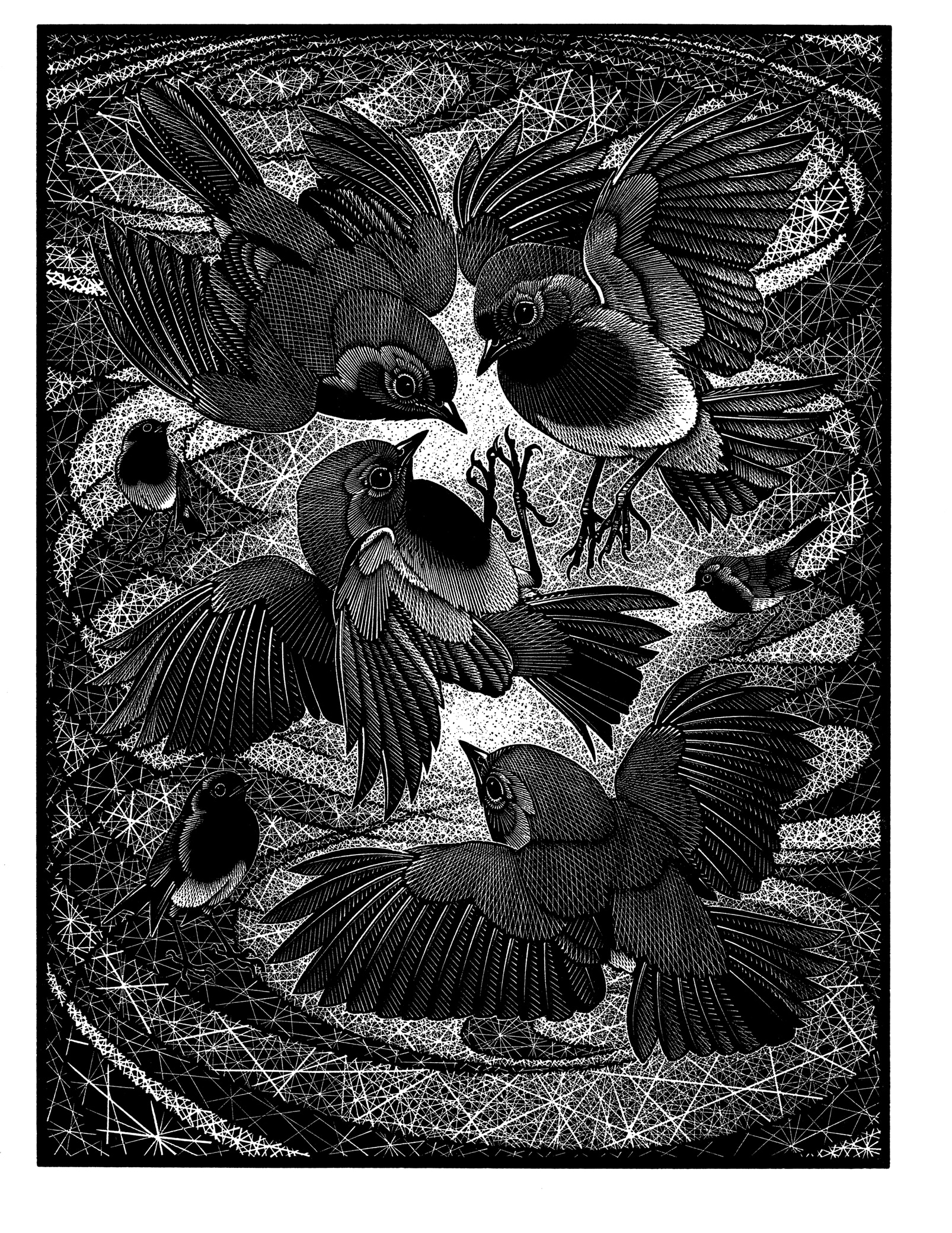
Of a Feather, 2008
ECL Ls.4.58
‘Irascibility of Robins’
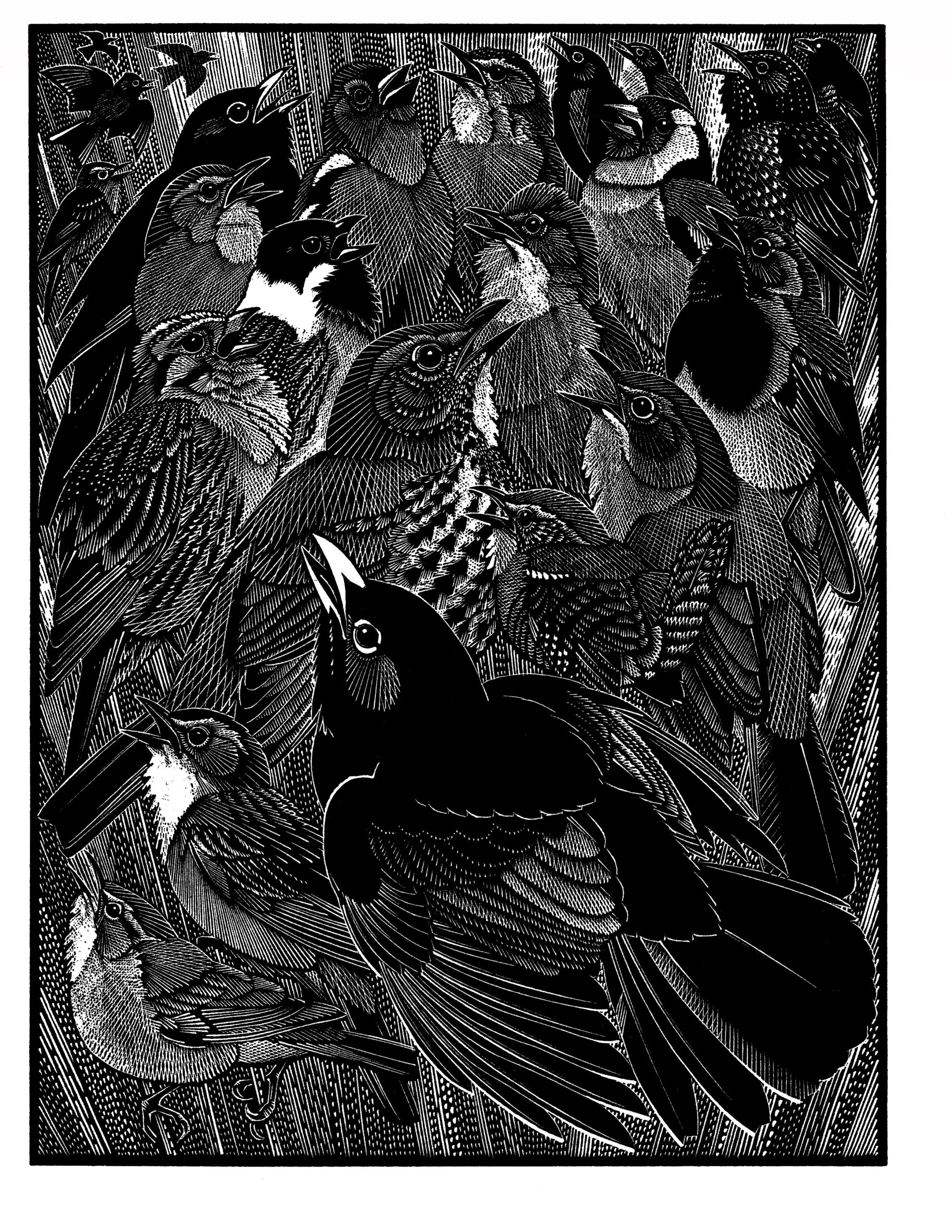
Of a Feather, 2008
ECL Ls.4.58
‘Jubilation of Songbirds’
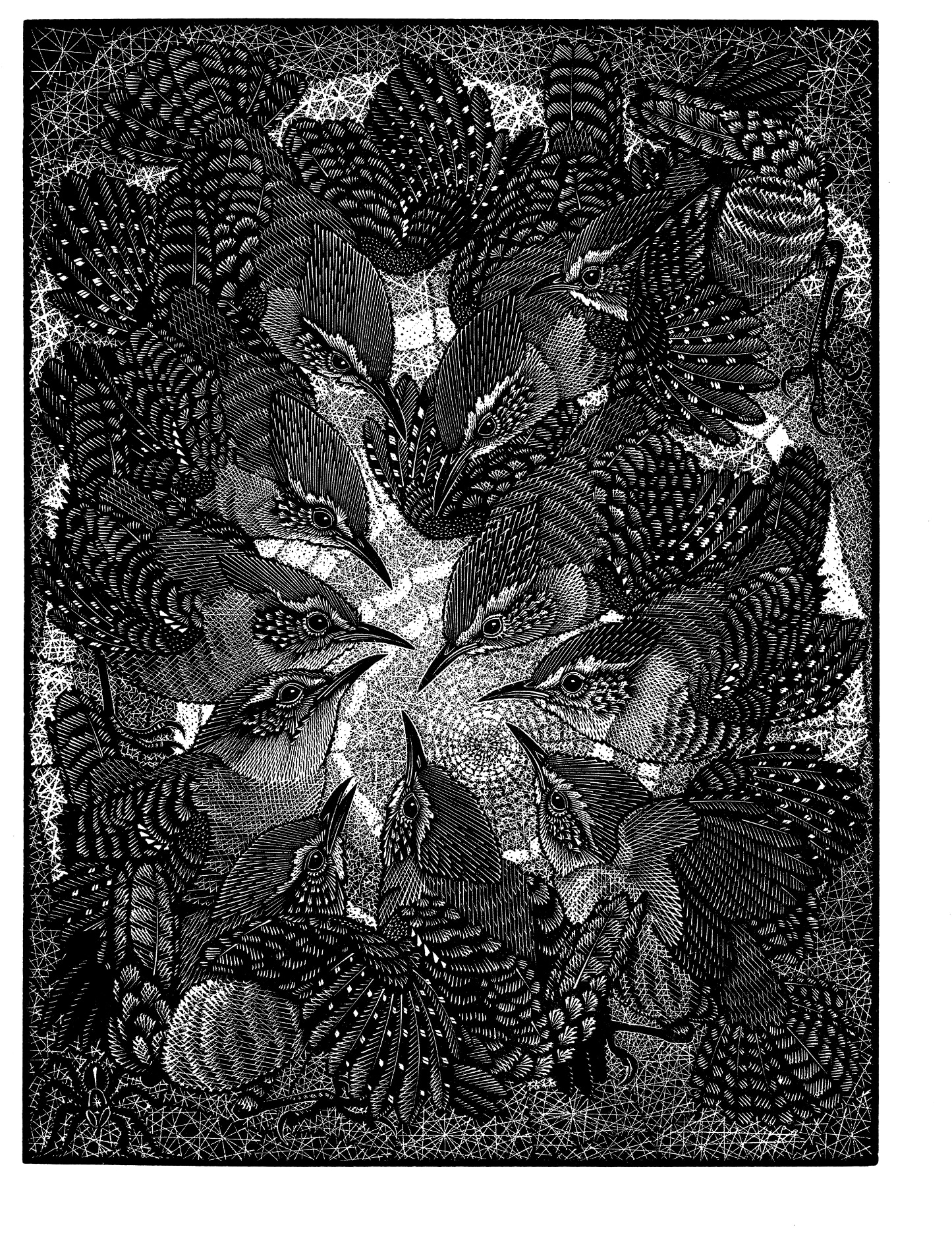
Of a Feather, 2008
ECL Ls.4.58
‘Round of Wrens’
Find out more about Gregynog at Bangor University’s online exhibition ‘Connecting Collections’
Find out more about Colin See-Paynton’s work at the artist’s website: http://www.see-paynton.co.uk/


